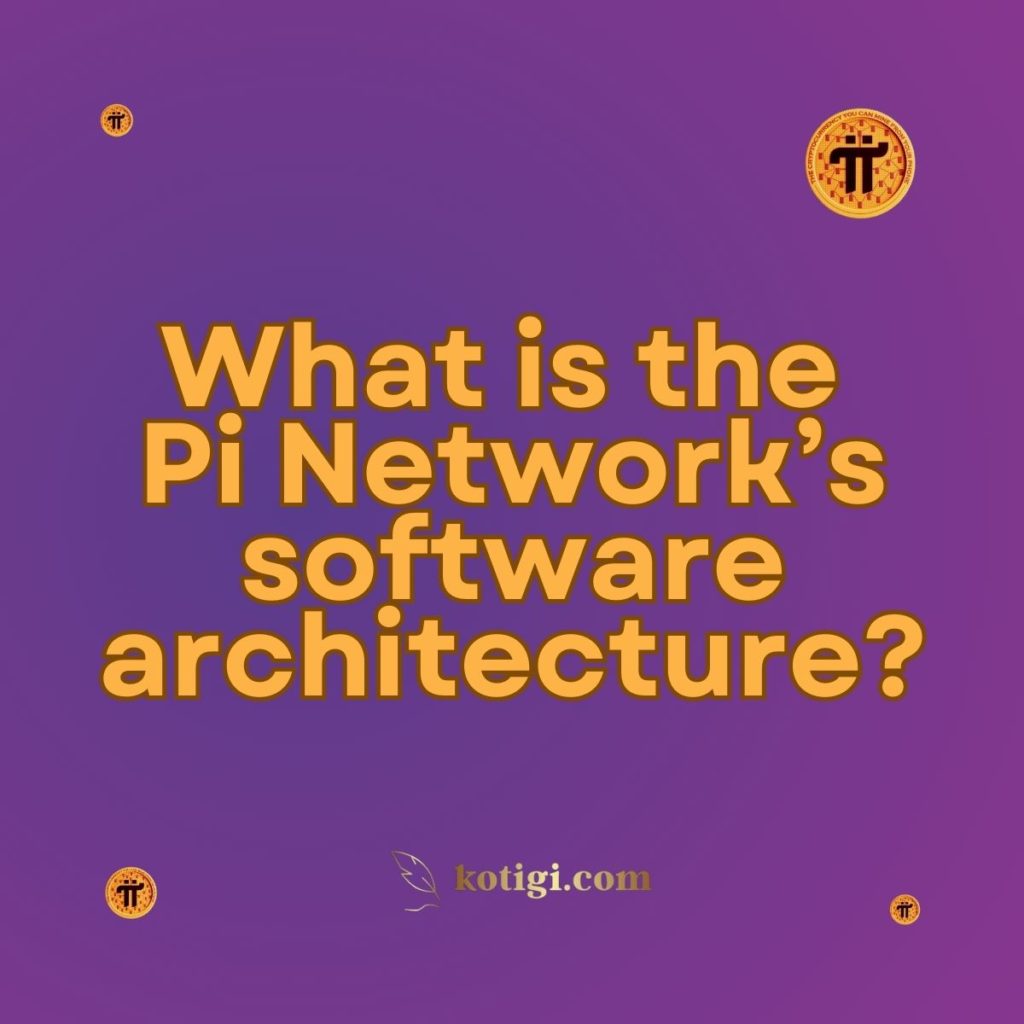
What is the Pi Network’s software architecture?
Pi Network’s software architecture integrates various components, including its user interface, backend services, APIs, and security protocols, ensuring a seamless, user-friendly experience while maintaining robust functionality and security.
Introduction
In the world of cryptocurrency, effective software architecture is crucial for creating a platform that is not only functional but also user-friendly and secure. Pi Network is designed to make cryptocurrency accessible to everyone, and its software architecture reflects this goal. This post explores the key elements of Pi Network’s software architecture, including its user interface, backend services, application programming interfaces (APIs), and security protocols. By examining these components, users can better understand how Pi Network operates and the technological innovations that drive its success.
Understanding Software Architecture in Cryptocurrency
Software architecture refers to the fundamental structures of a software system and the discipline of creating such structures. It serves as a blueprint for both the system and the project developing it. In the context of cryptocurrency platforms like Pi Network, effective software architecture is essential for ensuring the platform’s scalability, reliability, and security.
A well-designed software architecture facilitates communication between various components of the system, such as user interfaces, backend services, and databases. It also addresses concerns related to performance, security, and user experience. The architecture must evolve as the platform grows to accommodate increasing user demands and technological advancements.
User Interface Design
The user interface (UI) is a critical aspect of Pi Network’s software architecture. A well-designed UI enhances user experience and promotes engagement within the platform.
Intuitive Layout
Pi Network’s user interface features an intuitive layout that makes navigation straightforward. Users can easily access various functions, such as mining, transactions, and community interactions, thanks to a user-friendly design that prioritizes accessibility.
Responsive Design
The UI is designed to be responsive, ensuring a seamless experience across different devices, including smartphones and tablets. This adaptability is crucial for accommodating a diverse user base and enhancing usability.
User-Centric Features
Pi Network integrates user-centric features into its UI, such as tutorials and FAQs, to help users understand the platform and its functionalities better. These resources are essential for onboarding new users and encouraging active participation.
Visual Consistency
Visual consistency throughout the app helps reinforce the brand identity and ensures that users can navigate the platform without confusion. Consistent design elements contribute to a more professional appearance and improve overall user satisfaction.
Backend Services
The backend services of Pi Network are responsible for managing data, processing transactions, and ensuring the overall functionality of the platform.
Data Management Systems
Pi Network employs robust data management systems that handle user information, transaction records, and blockchain data. These systems are designed for efficiency, allowing for quick data retrieval and processing.
Transaction Processing
The backend services facilitate real-time transaction processing, ensuring that user transactions are executed swiftly and accurately. This efficiency is crucial for maintaining user trust and satisfaction.
Integration of Microservices
Pi Network’s architecture may incorporate microservices, allowing different components of the platform to operate independently. This design improves scalability and flexibility, enabling Pi Network to adapt to changing user needs and technological advancements.
Performance Monitoring
Continuous performance monitoring of backend services is essential for identifying bottlenecks and ensuring optimal system performance. Pi Network utilizes various monitoring tools to track performance metrics and address issues proactively.
Application Programming Interfaces (APIs)
APIs play a vital role in Pi Network’s software architecture, facilitating communication between different components of the system and enabling third-party integrations.
Role of APIs
APIs enable different software components to communicate and share data, streamlining the interaction between the user interface, backend services, and external applications. This interoperability is crucial for enhancing functionality and user experience.
Third-Party Integrations
Pi Network’s APIs allow for seamless integration with third-party applications, enabling users to access additional features and services. This capability enhances the platform’s versatility and promotes user engagement.
Documentation and Developer Support
Providing comprehensive API documentation and support is essential for encouraging developers to build on the Pi Network platform. Clear documentation enables third-party developers to create applications and services that complement the Pi Network ecosystem.
Security Considerations
APIs must be designed with security in mind to prevent unauthorized access and protect user data. Pi Network implements robust security measures to safeguard API endpoints and ensure that data transmission is secure.
Security Protocols
Security is a paramount concern in cryptocurrency platforms, and Pi Network prioritizes implementing robust security protocols to protect user data and transactions.
Encryption Techniques
Pi Network employs advanced encryption techniques to secure user data both in transit and at rest. This ensures that sensitive information, such as passwords and transaction details, is protected from unauthorized access.
Authentication Mechanisms
The platform utilizes multi-factor authentication (MFA) to enhance user account security. MFA requires users to provide multiple forms of verification before accessing their accounts, making it more difficult for unauthorized users to gain access.
Regular Security Audits
Conducting regular security audits is essential for identifying vulnerabilities within the software architecture. Pi Network engages in periodic audits to assess its security posture and implement necessary improvements.
Incident Response Plans
Having an incident response plan in place ensures that Pi Network can effectively respond to security breaches or other emergencies. This proactive approach helps minimize the impact of potential security incidents on users and the overall platform.
Conclusion
Pi Network’s software architecture is a critical component of its success, enabling the platform to deliver a user-friendly and secure cryptocurrency experience. Through its intuitive user interface, efficient backend services, flexible APIs, and robust security protocols, Pi Network is well-equipped to meet the demands of its growing user base. As the cryptocurrency landscape evolves, Pi Network’s commitment to enhancing its software architecture will play a vital role in ensuring its sustainability and user satisfaction.
Key Takeaways:
- Software architecture serves as the foundation for Pi Network’s functionality, scalability, and security.
- The user interface is designed to be intuitive and responsive, promoting user engagement.
- Backend services manage data and facilitate real-time transaction processing efficiently.
- APIs enable communication between components and support third-party integrations, enhancing functionality.
- Robust security protocols, including encryption and multi-factor authentication, protect user data and transactions.
- Regular security audits and incident response plans ensure the platform’s resilience against potential threats.





